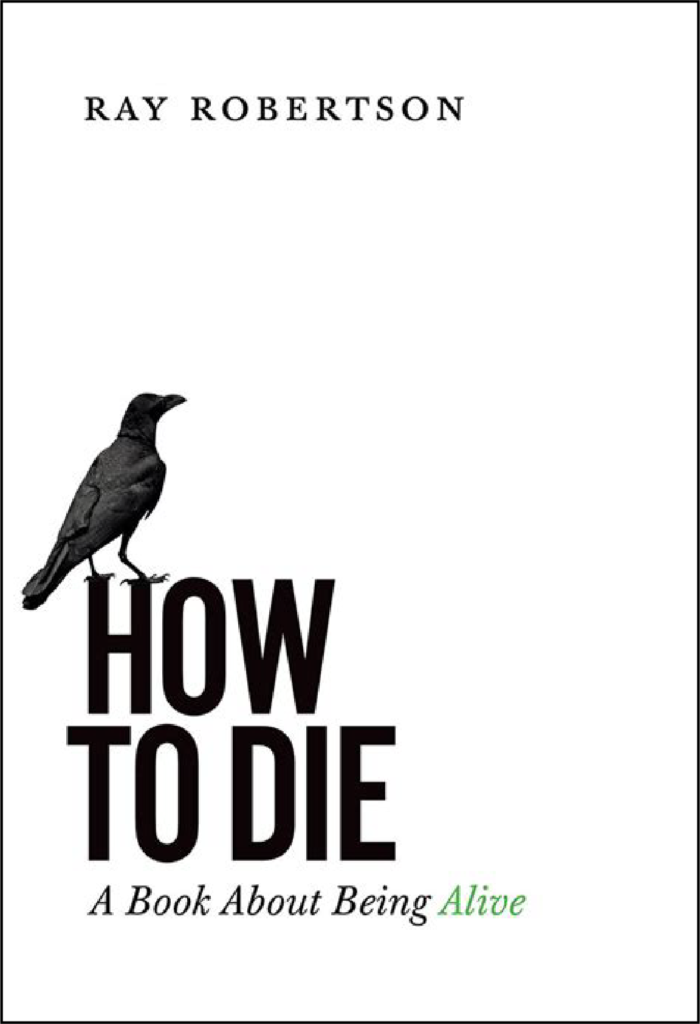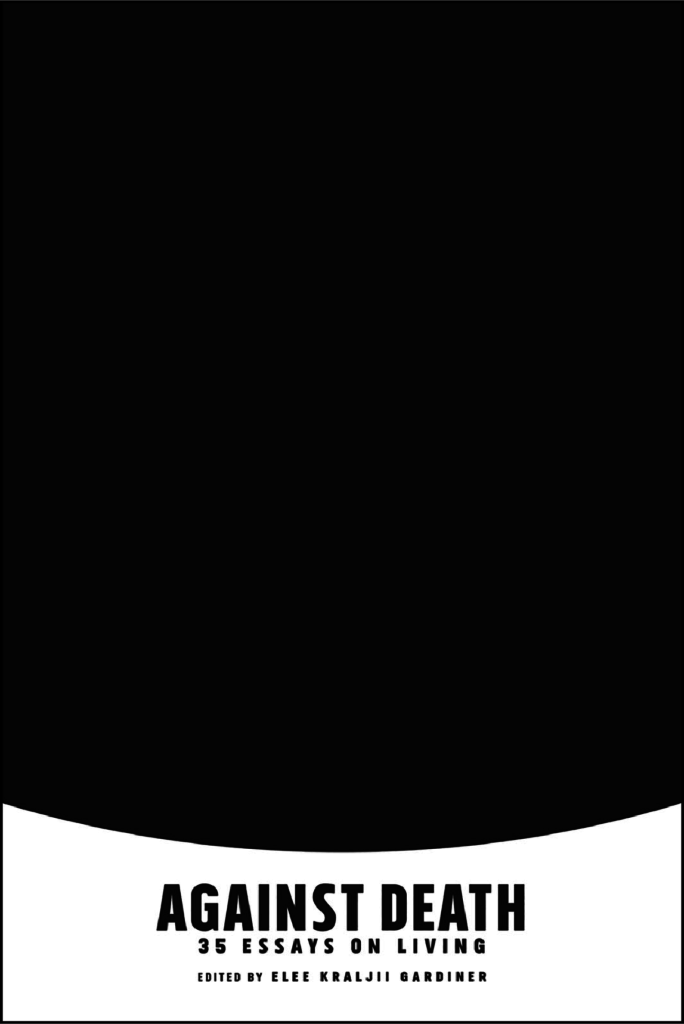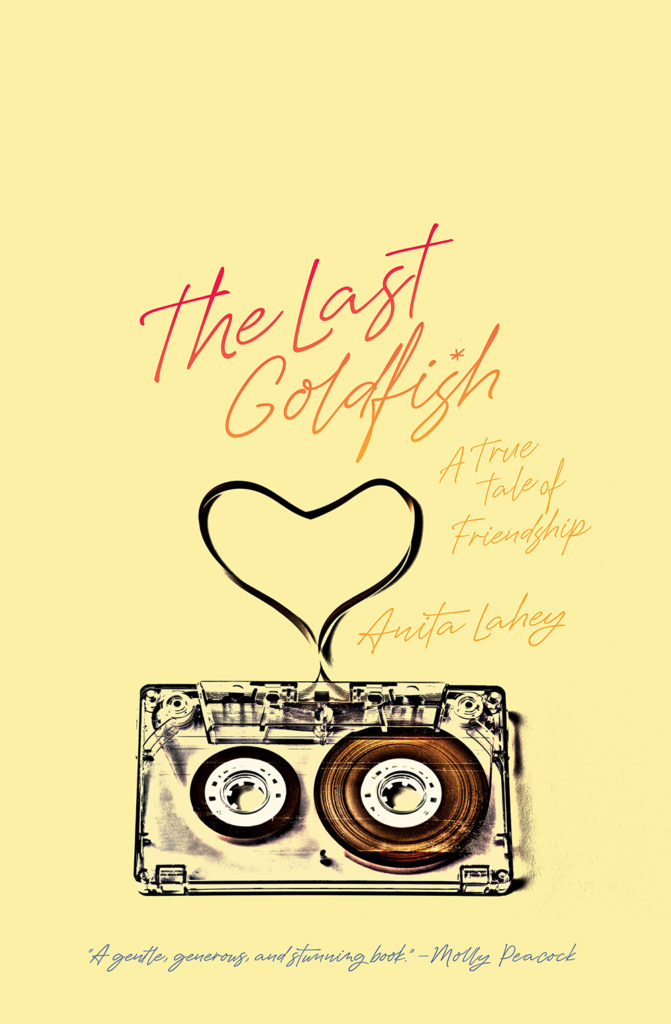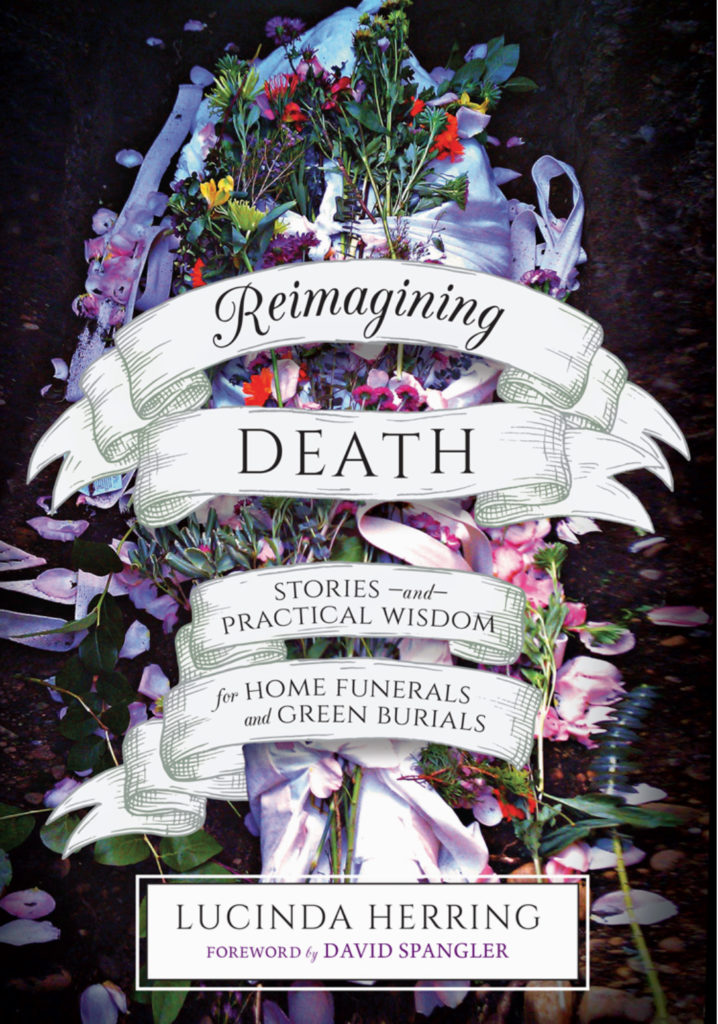“I have come close to dying more than once. Incidents range from a happenstance beatdown in a colorado parking lot, to a wasted midwinter bike ride that buried me under my twisted bike and two feet of snow. Still, until recently, when death came too close, I simply sped up without a single glance behind.”

 But now, like Toronto writer Ray Robertson, whose new book is aptly titled How To Die: A Book About Being Alive, I’m in that 50s age range, and, while hardly at death’s door, I can feel myself slowing down — physically, if not mentally. Barring any unlikely Elon Musk-esque discoveries, my life is more than half over (if all goes well, that is). The list of my contemporaries who have passed “before their time,” as we are overly wont to say, is growing. Death has picked up its beastly pace, and there are days when I catch more than occasional whiffs of its rotten breath wafting over my shoulder.
But now, like Toronto writer Ray Robertson, whose new book is aptly titled How To Die: A Book About Being Alive, I’m in that 50s age range, and, while hardly at death’s door, I can feel myself slowing down — physically, if not mentally. Barring any unlikely Elon Musk-esque discoveries, my life is more than half over (if all goes well, that is). The list of my contemporaries who have passed “before their time,” as we are overly wont to say, is growing. Death has picked up its beastly pace, and there are days when I catch more than occasional whiffs of its rotten breath wafting over my shoulder.
A glance back at this ever-present pursuer seems timely. The only problem: the beast is elusive. I can smell it, but I can’t seem to catch it in the act. It’s sneaky. Robertson feels it too and his surprisingly breezy book struggles to get a good look at its subject. How to write about something that’s everywhere and nowhere? Despite an awareness that death is coming, contemporary society allows us to look away almost every time. As Robertson notes, “we can at least avoid the subject by treating it as morbidly taboo or existentially irrelevant and acting as if we’re going to live forever, just like we know we deserve.”
This, he observes, results in a feedback loop of denial, one which ultimately has repercussions for our mental health and (as COVID-19 hysteria demonstrates loudly) our society. The schism between life and death has never been so apparent. The less we acknowledge death, the harder it is to face it when it comes into our lives.
An Anvil Press anthology of personal essays from varied contributors has a title similar to Robertson’s book: Against Death: 35 Essays on Living. From this, I take it that although small presses are, unlike their corporate counterparts, brave enough to put out books contemplating death (despite the prospect of lacklustre sales), they are still hedging their bets. It’s about death, sure, but read it anyway — it’s really about life. These essays are primarily stories of severe illness, recovery (however partial), and the aftereffects. The seize-the-day rhetoric that Ray Robertson pokes fun at lovingly in his book receives the poetic treatment here. In these essays, little things (a phone call from an old friend, a kind nurse, a bright red leaf in the wind on a blustery fall day) act as reverberating reminders that life is short and ever so precious, even if you are too goddamn sick to seize the day. For those of us lucky enough to not have spent significant time in death’s shadow, this collection is the, uh, next best thing.
 Of course, there are other angles from which to try to glimpse the elusive creature. Consider The Last Goldfish, a recently released work by poet and essayist Anita Lahey. Again, the subtitle is revealing — “A Memoir of Friendship,” in this case. There’s no mention of dying whatsoever, but death clings to Lahey’s story the way a child holds her mom’s hand as they set out for the first day of school. In late 1980s Toronto, two best friends, Lahey and Louisa, enrol in Ryerson’s journalism school. Before long — and this is not so much a spoiler as a warning — Lou’s aggressive melanoma sets in. That cancer should come for prototypically feisty red-headed Lou seems particularly unfair. Lou is an indomitable spirit who at one point slips her best friend a crucially timed note reading only “Carpe Diem.” It’s an anecdote appropriate for the book’s setting, the semi-sullen Gen X era of Peter Weir’s maudlin, yet undeniably affecting 1989 movie Dead Poets Society even as it reminds us that Lou never really has a chance. Or does she? Throughout the slow, rapid progression of dying, she continues to find ways to live her life. She clings to her job at Eaton’s, moves in with her boyfriend, and insists on long talks with her best friend. Meanwhile, tumours sprout from her forehead and ineffective treatments make them puss up and burst. Lahey’s understated portrait of Lou shows her ordinary bravery, a seize-the-day gumption even more affecting for its mundanity.
Of course, there are other angles from which to try to glimpse the elusive creature. Consider The Last Goldfish, a recently released work by poet and essayist Anita Lahey. Again, the subtitle is revealing — “A Memoir of Friendship,” in this case. There’s no mention of dying whatsoever, but death clings to Lahey’s story the way a child holds her mom’s hand as they set out for the first day of school. In late 1980s Toronto, two best friends, Lahey and Louisa, enrol in Ryerson’s journalism school. Before long — and this is not so much a spoiler as a warning — Lou’s aggressive melanoma sets in. That cancer should come for prototypically feisty red-headed Lou seems particularly unfair. Lou is an indomitable spirit who at one point slips her best friend a crucially timed note reading only “Carpe Diem.” It’s an anecdote appropriate for the book’s setting, the semi-sullen Gen X era of Peter Weir’s maudlin, yet undeniably affecting 1989 movie Dead Poets Society even as it reminds us that Lou never really has a chance. Or does she? Throughout the slow, rapid progression of dying, she continues to find ways to live her life. She clings to her job at Eaton’s, moves in with her boyfriend, and insists on long talks with her best friend. Meanwhile, tumours sprout from her forehead and ineffective treatments make them puss up and burst. Lahey’s understated portrait of Lou shows her ordinary bravery, a seize-the-day gumption even more affecting for its mundanity.
When Lou dies, Lahey rages against the unfairness, the randomness, but mostly against the galling reality “that anyone could be out there doing whatever they normally did on a weekday morning.” Her best friend was dead, but the world went on spinning, phone calls already activating what another author, Lucinda Herring, might call “the industrial funeral complex.”
 Lucinda Herring is a licensed funeral director who advocates for a holistic funerary approach, writing from her home on an island nestled in the Cascade Mountains north of Seattle. Hers is the first of these recent small press titles to deal with death directly, without any deflection. Consider the title: Reimagining Death: Stories and Practical Wisdom for Home Funerals and Burials. Props are due to Herring for having included not only “death,” but also “funeral” and “burial” in the title. Of course, that’s the point of the book — to address the actual doing of death, the digging in the dirt — instead of speaking about it in distant, philosophical terms or trying to make sense of it via metaphor and memoir. In her own life, Herring went so far as to become both a funeral director and ordained minister precisely so that she could directly assist people in reclaiming death from casket showrooms and “get over it” grief counselors.
Lucinda Herring is a licensed funeral director who advocates for a holistic funerary approach, writing from her home on an island nestled in the Cascade Mountains north of Seattle. Hers is the first of these recent small press titles to deal with death directly, without any deflection. Consider the title: Reimagining Death: Stories and Practical Wisdom for Home Funerals and Burials. Props are due to Herring for having included not only “death,” but also “funeral” and “burial” in the title. Of course, that’s the point of the book — to address the actual doing of death, the digging in the dirt — instead of speaking about it in distant, philosophical terms or trying to make sense of it via metaphor and memoir. In her own life, Herring went so far as to become both a funeral director and ordained minister precisely so that she could directly assist people in reclaiming death from casket showrooms and “get over it” grief counselors.
She gently encourages us — at times a little too gently — to rethink such practices as embalming (first introduced in the US Civil War to ship dead soldiers back to their families) and internment in shellacked, bedazzled boxes. “A simple shroud in a hole dug in the ground will do,” Herring points out. Not that there aren’t alternatives to even that alternative. For instance, Herring is happy to discourse on the value of being put to rest in bio-artist Jae Rhim Lee’s now-famous Infinity Burial Suit, a garment lined with person-specific mushroom spores that will speed decomposition and prevent toxins in your decaying corpse from staining the soil.
New age gimmicks aside, Herring’s real message of simplicity has to do with learning from those times when death has been our constant companion, itself a completely natural phenomenon leading to final everlasting rest. Instead, we have come to see death as perverse, a shock and a letdown — a creature from another time that sneaks in and steals even those who have paid amply for organ upgrades, soul transplants and mind downloads. Herring suggests that we would likely feel better about death — our own and that of others — if we weren’t in such a hurry to avoid and deny it. Hold hands with your departed loved one. Stage a viewing in the living room. Dig the hole with friends. Whatever you do, invite death in for a moment or two — at least long enough to say hello… and then, goodbye.
